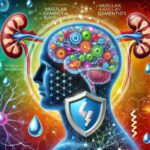Life-Changing Breakthrough: New Gene Therapy Restores Vision for Blind Patients!
new gene therapy vision restoration
New Gene Therapy Restores Vision for Patients with Rare Blindness
A groundbreaking gene therapy developed by scientists at the University of Florida has revolutionized the lives of patients by significantly improving their vision. This pioneering treatment has allowed individuals to witness the beauty of stars and snowflakes for the first time and substantially improved their ability to navigate daily activities. Ongoing trials demonstrate its safety and effectiveness, bringing it one step closer to FDA approval and widespread application.
Revolutionary Vision Enhancement
One patient marveled at her first star, while another beheld snowflakes for the very first time. Others found newfound independence, confidently moving outdoors or reading small print on candy labels. These remarkable advancements are the result of gene therapy designed to restore functional vision for those suffering from Leber congenital amaurosis type I (LCA1), a rare inherited blindness.
new gene therapy vision restoration: Milestone in Genetic Therapy
Recipients of the highest dose of the therapy experienced up to a 10,000-fold increase in light sensitivity, better performance on eye chart readings, and enhanced navigation in standardized mazes. For many, the therapy felt like turning on dim lights after years of living in darkness. Researchers noted that side effects were minimal, with minor surgical issues and treatable inflammation being the most common.
Future Horizons and Advancements
“This marks the first treatment for LCA1, showcasing both a robust safety profile and clear efficacy. These findings set the stage for a phase 3 clinical trial and eventual commercialization,” remarked Shannon Boye, Ph.D., the chief of UF’s Division of Cellular and Molecular Therapy, and co-author of the study. Atsena Therapeutics, co-founded by Boye, developed the therapy and sponsored the research.
Kenji Fujita, M.D., Atsena’s chief medical officer, echoed the excitement: “We are proud to advance the fundamental work pioneered by Shannon and Sanford Boye, and delighted that our 12-month data has been published in a leading medical journal. This therapy holds tremendous potential for treating blindness in both children and adults with LCA1.”
On September 5, the University of Florida team, in collaboration with researchers from the University of Pennsylvania and Oregon Health and Science University, published their findings in The Lancet.
Trailblazing Treatment for LCA1: new gene therapy vision restoration
LCA1, affecting only about 3,000 people across Europe and the U.S., results from two defective copies of the gene GUCY2D, critical for the eye’s light-sensitive cells. Individuals with this condition suffer from severe visual impairments, making basic tasks like reading, driving, or visually navigating the world almost impossible.
Shannon Boye has devoted over two decades to developing this therapy, beginning her work as a graduate student at UF in 2001. Together with her husband, Sanford Boye, they created a virus-based delivery system to transport functional GUCY2D genes to the affected cells. In 2019, they founded Atsena Therapeutics to commercialize their LCA1 treatment along with other innovative gene therapies.
Sanford Boye emphasized the importance of focusing on rare diseases: “Pharmaceutical companies often overlook these conditions because they aren’t high-revenue markets. However, we believe these patients deserve attention, as our treatments offer substantial improvements in their quality of life.”
The study enrolled 15 participants who were treated at the University of Pennsylvania or Oregon Health and Science University, receiving varying doses of the therapy to determine the optimal balance between safety and efficacy. Each patient underwent surgery on one eye, with researchers monitoring their progress over a year. Those receiving higher doses showed the most dramatic vision improvements.
The therapy is anticipated to have lasting effects, potentially requiring just a single treatment per eye. So far, improvements in vision have persisted for at least five years.
FDA approval hinges on the results of the upcoming phase 3 clinical trial, where the therapy will be tested on a larger cohort.
For further details on this study, see “Vision 10,000 Times Better: Gene Therapy Delivers Life-Changing Results.”
Reference
“Safety and efficacy of ATSN-101 in patients with Leber congenital amaurosis caused by biallelic mutations in GUCY2D: a phase 1/2, multicentre, open-label, unilateral dose escalation study” by Paul Yang, Laura P Pardon, Allen C Ho, Andreas K Lauer, Dan Yoon, Shannon E Boye, Sanford L Boye, Alejandro J Roman, Vivian Wu, Alexandra V Garafalo, Alexander Sumaroka, Malgorzata Swider, Iryna Viarbitskaya, Tomas S Aleman, Mark E Pennesi, Christine N Kay, Kenji P Fujita, and Artur V Cideciyan, 5 September 2024, The Lancet.
DOI: 10.1016/S0140-6736(24)01447-8.







